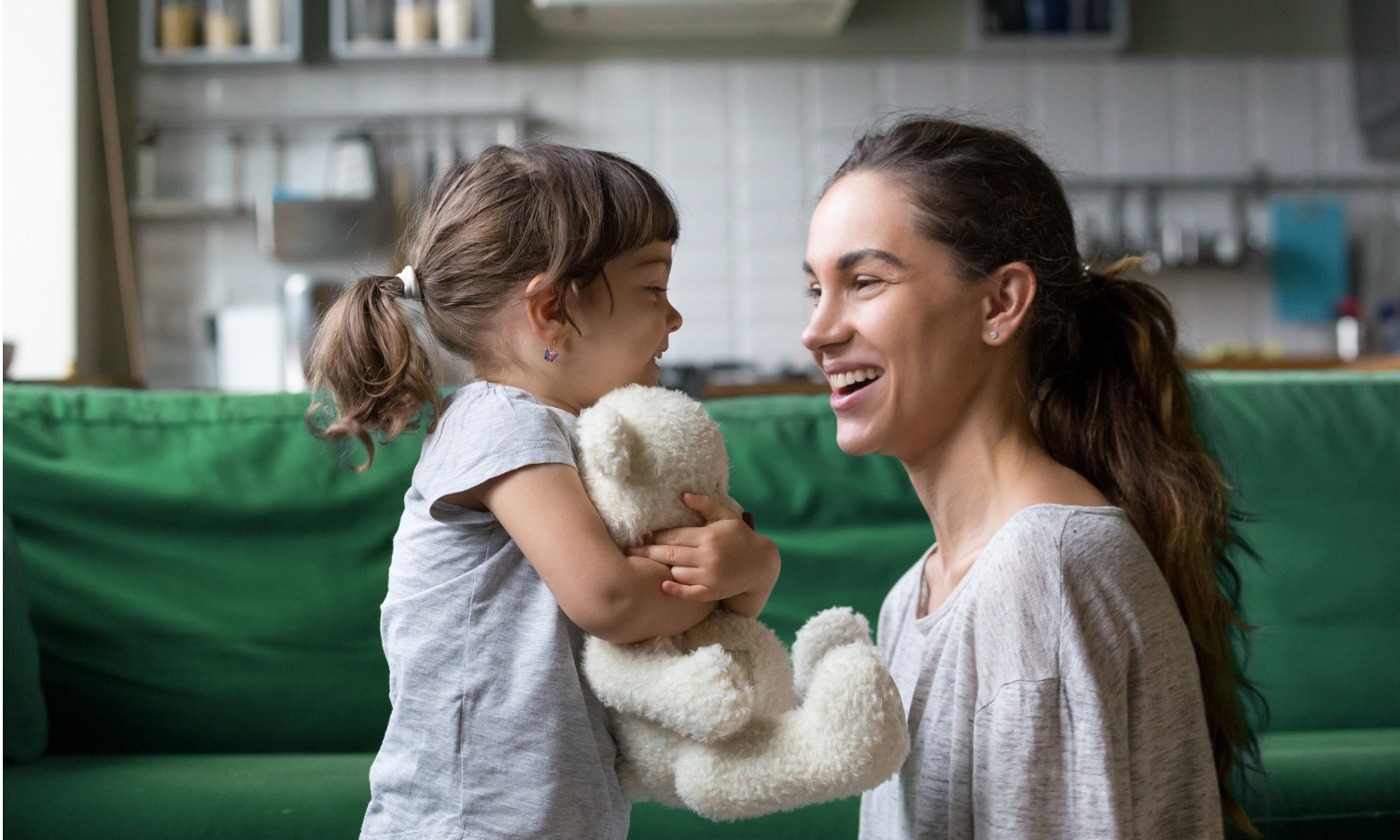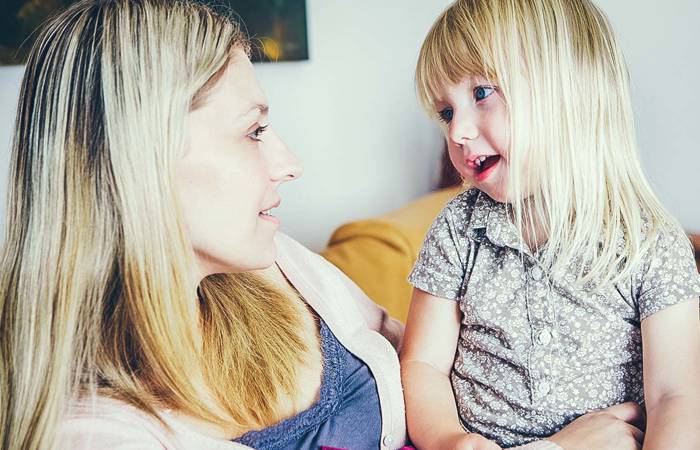Like what you see?
Sign up to receive more free parenting advice.
Thank you for subscribing to our newsletter!
Child Development

Credit: iStock.com/fizkes
Communication development is linked to many other outcomes, so parents are encouraged to be proactive and seek early intervention if they’re concerned.
Babies not reaching certain milestones is a common concern for parents.
Shouldn’t they be crawling by now? Why aren’t they walking like the other children in Mother’s Group? Shouldn’t they be saying more words?
The problem with milestones is they don’t always reflect the dynamic nature of development and how sometimes lots can happen quickly or early and for other children, it can be more slow and steady. The question is, how slow is too slow?
So, when it comes to communication development, what’s ideal and when should parents worry?
“Communication is so heavily linked to other lifelong outcomes, it is something to be proactive about and seek early intervention if parents are concerned,” says Tiffany Noble, National Manager of Speech Pathology at Goodstart Early Learning.
“Parents tend to be particularly concerned when their child isn’t using the amount of words verbally recommended for their age by Speech Pathology Australia
“When there is a discrepancy in what they can understand and/or say as compared to what we might expect for their age, that’s when parents might want to seek additional support from a speech pathologist. This doesn’t necessarily require a GP referral.”
She explains that while some parents might be hesitant to label their child as having a problem and would rather just ‘wait-it-out,’ earlier intervention is better.
“An assessment by a speech pathologist can be really informative,” she explains.
“They are trained to identify communication strengths and abilities as well as the needs of a child so, they can make specific recommendations about what is required e.g. this might include commencing intervention immediately or booking in a review whilst providing families with tips to practice in the meantime.
Communication Milestones
The foundations for communication, speech and language begin far before a child’s first verbal word.
“Research shows that back and forth interactions, from BIRTH, between a child and their trusted adults are the most beneficial,” Tiffany says.
“Adding to that, using everyday interactions (e.g. nappy change, mealtimes, applying sunscreen etc) to expose a child to lots of different communication experiences with that trusted adult makes a significant difference.”
Before children turn one, Tiffany explains that babies use their non-verbal skills such as gesture, facial expressions and babbling as their primary communication tools.
By the time a child turns one, they should begin expressing their first words verbally.
However, those first words won’t always be adult-like, for example “bot-bot” for bottle.
Between 18 months and two years, Tiffany says children should begin joining two ideas together in their verbal phrases, for example, “my ted” or “me go.”.
After that, their vocabulary should expand over time and this relates to the different interaction experiences they are able to experience and the different and interesting new words that are introduced and modelled within these exchanges.
“My child says very little but, understands a lot.”
For children who present as understanding everything but don’t verbally communicate as much as expected, Tiffany still recommends parents seek support from a speech pathologist.
In addition, she recommends parents become more mindful in their interactions with their child and ensure the language they use is accessible to the child.
“We tend to not pay that much attention to HOW we communicate with children who understand lots of what is going on around them but aren’t really speaking that much. As a result, we can find ourselves using sentences and instructions that are too long,” she says.
“The best way to support a child’s expressive language (verbal language) development is to match our model of communicating with the child’s current ability and it extend it by one or two words.
“Unless we scaffold back to their level of ability, they are unable to easily access those words they need to practice and eventually use.”
Tiffany provides the example of asking a 14 month old child, who is not yet speaking verbally, to get their toothbrush.
When their parent says, “Can you please go and get your toothbrush?” the child might know the word “toothbrush” and runs off to the bathroom to bring it to their parent.
A well-meaning response might be, “Oh, you got your blue toothbrush from the bathroom, that is so helpful, now we can clean your teeth, brush, brush, brush.” Tiffany refers to this as a sound soup where the words just ‘wash’ over the child.
Instead, she recommends matching the child’s level with one or two-word responses which is extending the child’s current communication skills by one or two levels.
When they bring the toothbrush, a language modelling response might be to clearly model the words; “toothbrush. Blue toothbrush. Toothbrush” Even though the child understands what the toothbrush is, where it is and how to use it, using too many words in our response means the child will not be able to easily identify or remember the key words and practice using them verbally over time.
Check their hearing
All Australian newborns undergo a newborn hearing test in hopsital, however, Tiffany cautions that the test might not pick up a mild to moderate hearing loss which can have a big impact on a child’s language development.
“Regular ear infections can also hinder language development,” she adds.
“Critical language development periods in a young child’s life (before age 3), rely on hearing ability so, fluid in the ear, middle ear infections and fluctuating hearing loss has the potential to delay a child’s language development.”
A GP can refer a child for a hearing test to ascertain whether this is the cause of the delay. Or parents can access private audiologists without a referral.
“Parents need to understand that questioning their child’s developmental stageis a really positive, important and brave step.” Tiffany adds.
“Children have better outcomes when concerns are explored and addressed early when required.”
Strategies to support your child’s communication
Tiffany identifies four key strategies parents can use to support their child’s communication to complement seeking advice from a qualified speech pathologist.
The first strategy she recommends is incorporating any strategies into your everyday routine.
“Parents are busy so, instead of trying to set aside a chunk of time that they probably don’t have, I always recommend working the strategies into their regular routines and rituals,” she says.
“Slow down each routine, like getting dressed, brushing teeth, putting the child’s shoes on, by a minute or two to really be deliberate in your response and modelling of key words.”
The second strategy is reducing the questions.
“When we ask questions, we expect an answer which can be ‘evaluated’ –as in, it can be wrong or right,” Tiffany explains.
“This puts a lot of pressure on a child and can hinder the continuity of an interaction
“Instead, make meaningful comments that they can respond to, either verbally or non-verbally.
“This sends the message that you see the child for who they are and they are enough. This is really important for their wellbeing and communication development.”
For example, when a child is playing in a sand pit, their parent can comment, “You are in the sand pit.” The child may respond with a smile (which counts as a turn within a back-and-forth interaction).
Then the child might pick up a spade, and the parent can say “spade” (this counts another a turn each in the interaction)
“Instead of being tempted to ask a question, such as, ‘What is that your holding?’ naming the object means the pressure is off and you are matching a language model to their experience which they may draw on next time,” she adds.
The third strategy is to pause for 10 seconds when waiting for a response.
“This is especially useful for children who seem to understand everything but don’t talk much,” Tiffany explains.
“After you’ve said something, count to 10 in your head to wait for a non-verbal or verbal response.
“Give the child time to process what you’ve said and then formulate their own response, such as a non-verbal facial expression, gesture or attempt to say something.” By doing this, you’re increasing the number of turns back and forth in any interaction which is the goal – aim for as many turns (verbally or non-verbally) as possible with your child!”
Finally, celebrate all communication – verbal and non-verbal – to build up the child’s confidence, celebrate their wins, no matter how small they may seem – they are critical building blocks in your child’s development.








